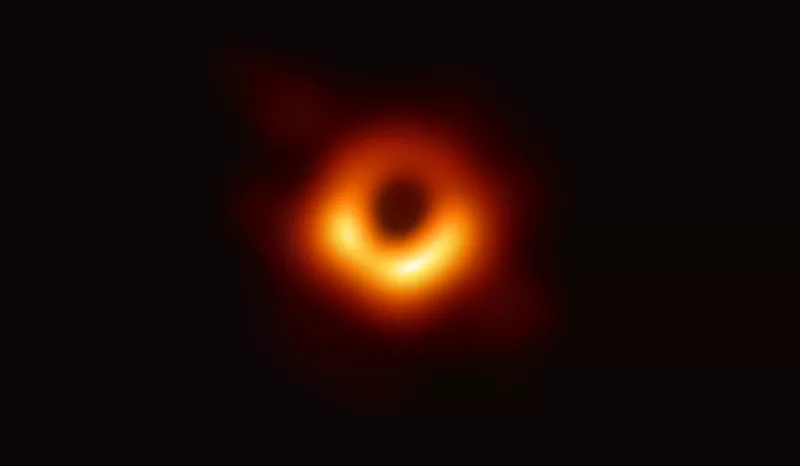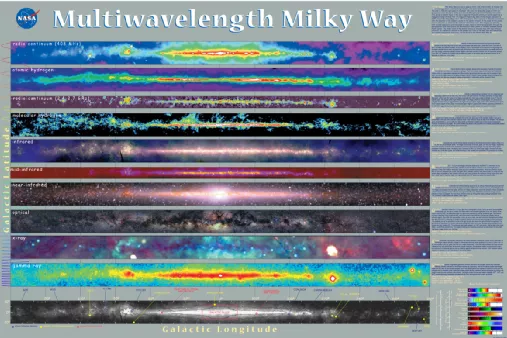Just now, the first photo of the black hole in the center of the Milky Way galaxy was released. At 21:07 on May 12, at a news conference held around the world, including Shanghai, astronomers showed people the first picture of a supermassive black hole in the center of our Milky Way Galaxy! This photo was taken by the international research team organized by the event horizon telescope (EHT) through a global network of radio telescopes.

We are all very excited to see this photo of the black hole in the center of the Milky Way galaxy, because it has been three years since the first black hole photo was released on April 10, 2019. Now, this valuable photo has raised more questions for us, waiting for us to explore and discover.
Question 1: the silver core black hole is more massive and closer to the earth. Why isn't the first picture of the black hole a silver core black hole
Since seeing the first black hole photo of mankind (M87 central black hole photo) in 2019, people have never forgotten the photo of their own central black hole of the Milky Way galaxy.
After shooting in 2017, two years later in 2019, we got a picture of M87 black hole 55 million light-years away. This is the only time we can clearly see the appearance of a black hole. Compared with the Milky way black hole, M87 black hole has great advantages. Its rotation axis is only 17 degrees, which is almost seen along its rotation axis, so there is almost no occlusion. Therefore, we can see the photo of M87 black hole relatively easily:

The supermassive black hole of the Milky way is located in the center of the Milky way. It is the supermassive black hole of our own galaxy. Surely some people will think that since they are around us, isn't it easier to shoot?
In fact, as the poem said, "if you don't know the true face of Lushan Mountain, you only live in it". Although this black hole is located in the center of the Milky Way galaxy, we are inside the Milky Way galaxy, which is not easy to photograph.
With the help of radio and infrared bands other than optics, as well as other galaxies, we gradually know our galaxies. Although the black hole of our galaxy itself (known as SGR. A *) is close, the data processing is more difficult and time-consuming due to occlusion, so "taking photos" takes more time.
However, waiting also makes the release of this picture more exciting, because it is a picture of a black hole in the center of our own Milky Way Galaxy! This is another major breakthrough after the EHT cooperation released the first black hole photo of mankind in 2019, capturing the central black hole (M87 *) in the more distant galaxy M87.
Question 2: How did you take this picture of the silver core black hole? Compared with the photography of the black hole in the center of M87 galaxy, what are the new methods
As we all know, M87 is almost in the direction of the rotation axis, and we are on the silver disk. Therefore, compared with M87, the silver core black hole will be blocked a lot during imaging. For example, when we observe the Milky way in the optical band, we will see the shielding of large dust and other gases. At this time, we must use the infrared or radio band with longer wavelength. At present, the mature ones are millimeter wave and submillimeter wave bands, that is, the visual interface telescope. It is worth mentioning that it uses different submillimeter and millimeter wave telescopes around the world to form an array with an aperture of tens of thousands of kilometers.
This photo is very similar to the M87 photo taken in 2019. It was taken using eight different millimeter wave telescopes around the world, or event horizon telescope for short.
This huge telescope combination is Alma (Atacama large millimeter / submiter array) in Chile, SPT (South Pole Telescope) in Antarctica, SMA (submilliter array) in Hawaii, and LMT (large millimeter array) in Mexico, Jcmt (James Clerk Maxwell Telescope) in Hawaii, IRAM (IRAM 30-m telescope) in Spain, apex (Atacama Pathfinder experiment) in Chile, and SMT (submillimeter telescope) in Arizona.
It is worth mentioning that the jcmt telescope in Hawaii is a telescope operated by China. Many Chinese scientists should observe here. Unfortunately, at present, the maximum diameter that infrared observation can reach is hundreds of meters. For example, the VLT / gravity of the European Southern Observatory can reach 130 meters, but the caliber of kilometers still varies greatly. I hope we can use the infrared band to see the photos of black holes in the future.

We know that the black hole of the Milky Way galaxy has only about 4 million times the mass of the sun (according to the 2020 Nobel Prize), while the black hole of M87 has reached 6.5 billion times the mass of the sun, which is 1650 times smaller than the latter.
In terms of size, the black hole in the center of the Milky Way galaxy is obviously a little smaller, but the shooting of the black hole in the center of the Milky Way galaxy is more difficult. This is because the mass of the black hole in the center of the Milky Way galaxy is much smaller and the distance is much closer than M87, so the possibility of surrounding material changes is much greater.
Compared with the observation of M87's black hole, the changes that took several days have now taken place in a few minutes, so the observation is more difficult. For example, for this photo, scientists have developed a new complex tool to consider the gas of Sgr A *.
Question 3: what are the differences and new information compared with the photos of the black hole in the center of M87 Galaxy
Because it is very difficult to observe alone, the photo of the black hole in the center of the Milky Way Galaxy (SGR a *) seen this time is the result of the research team spending a lot of time extracting different photos and averaging them.
This is also the first time to finally present a picture of a black hole hidden in the center of our Milky Way galaxy.
We can recall the time of the last photo: we started shooting in 2017, and we got a picture of the M87 central black hole in 2019.
However, it was not until five years later that scientists used supercomputers to synthesize and analyze data and strictly compare the black hole simulation database with the observation results that we saw the picture of the black hole in the center of the Milky way for the first time. Thanks to the wisdom and hard work of scientists, we have seen an unprecedented picture!
Question 4: the silver core black hole is less than 0.0005% of the Milky way. Why can it bind hundreds of billions of stars
If we look at the structure of the Milky way, the structure of the Milky way can be divided into three parts: silver core (including black hole), silver disk and silver halo; In terms of mass, the mass of the large black hole in the center of the Milky Way galaxy is less than 0.0005% of the mass of the Milky Way galaxy; From the perspective of the galactic core, the Galactic black hole is only a part of the Galactic nuclear sphere.
So, what kind of force will fix the hundreds of billions of stars in the Milky way within a limited range? How does all visible matter gather?
In fact, this question was raised at the beginning of last century.
Astrophysicist Fritz Zwicky measured the stars in the cluster and found the existence of dark matter. Because zweiji's character is not liked by everyone, although this concept is right, it has not been valued by everyone.
Until 1970, the young verin Rubin and her mentor Kent Ford successively studied the rotation speed of stars in the Andromeda galaxy. Using high-precision spectral measurement technology, they can detect the relationship between the rotation speed and distance of peripheral stars far away from the galactic nucleus. According to Newton's law, if the mass of the galaxy is mainly concentrated on the visible stars in the galactic core, the speed of the stars outside the galaxy will decrease with distance.
However, the observation results show that the velocity of stars outside the galaxy is constant over a considerable range. This means that there may be a large amount of invisible matter in galaxies, which is not only distributed in the core of galaxies, but its mass is much greater than the total mass of luminous stars.
Now we know that the mass of invisible matter (dark matter) is about 10 times heavier than that of visible matter, and almost most galaxies do.
This is the answer to the previous question. Although the black hole in our silver core has such a small mass, it can bind hundreds of billions of stars with the help of dark matter!
Question 5: what is the significance of this photo for research
Before the press conference, when many people heard the photos of the black hole in the center of the Milky Way galaxy, they expected to see the black hole similar to that in the movie star trek, but the result was not so.
This is because what we see is the part close to the black hole. If it is relatively far away, we will see a scene similar to that in the movie star trek.
In any case, this picture is closer than the previous M87, because it is a picture of our own galaxy black hole, and it is more difficult to shoot.
Once again, let's thank all the scientific workers and our Chinese scientists who participated in this research. Let's have a glimpse of the black hole in the center of the Milky Way galaxy. Astronomical exploration will never stop!